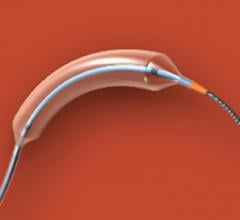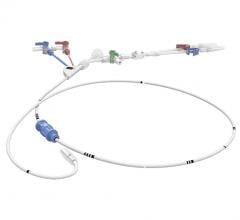September 17, 2010 - The Food and Drug Administration (FDA) cleared the first device that combines an angioplasty balloon and an embolic capturing feature. Angioslide's Proteus device is presently indicated for use in the lower limbs during Percutaneous Transluminal Angioplasty (PTA) procedures.
Proteus joins the new class of medical devices aimed at treating peripheral arterial disease (PAD), one of the fastest-growing segments in the worldwide interventional marketplace. An estimated 10 million patients suffer from PAD in the United States alone, of whom approximately 1,000,000 undergo a revascularization or amputation procedure each year. PTA procedures are a common treatment for peripheral artery disease for opening up the artery to improve blood flow. However, one potential complication of a PTA procedure is debris from the artery wall being disturbed during the procedure and floating downstream. In the worst case, this debris can totally occlude the artery and cause complete lack of circulation to the lower limb.
The Proteus device combines a standard angioplasty balloon with a feature that can capture the debris that may be liberated during the PTA procedure. Proteus has the same characteristics as a standard angioplasty balloon, but the embolic capture feature allows debris to be trapped within the balloon and removed as the physician removes the angioplasty balloon at the end of the PTA procedure.
"I am very pleased with the use of the Proteus device in my patients," said Subhash Banerjee, M.D., Chief, Division of Cardiology, from VA North Texas Health Care System, Dallas, Texas. "It is simple to use and cost-effective and I can now be assured that my patients will have a significant reduction in risk from the PTA procedure."
"Being part of the company's Scientific Advisory Board from its early days, I am very excited that Proteus has received FDA clearance for use in the lower limbs. Proteus and Embolic Capture Angioplasty will reduce the risk of complications for our patients and in the future could become the gold standard for angioplasty procedures," said John Laird, M.D., Medical Director, UC Davis Vascular Center, Sacramento, Calif.
For more information: www.angioslide.com


 April 04, 2024
April 04, 2024 








